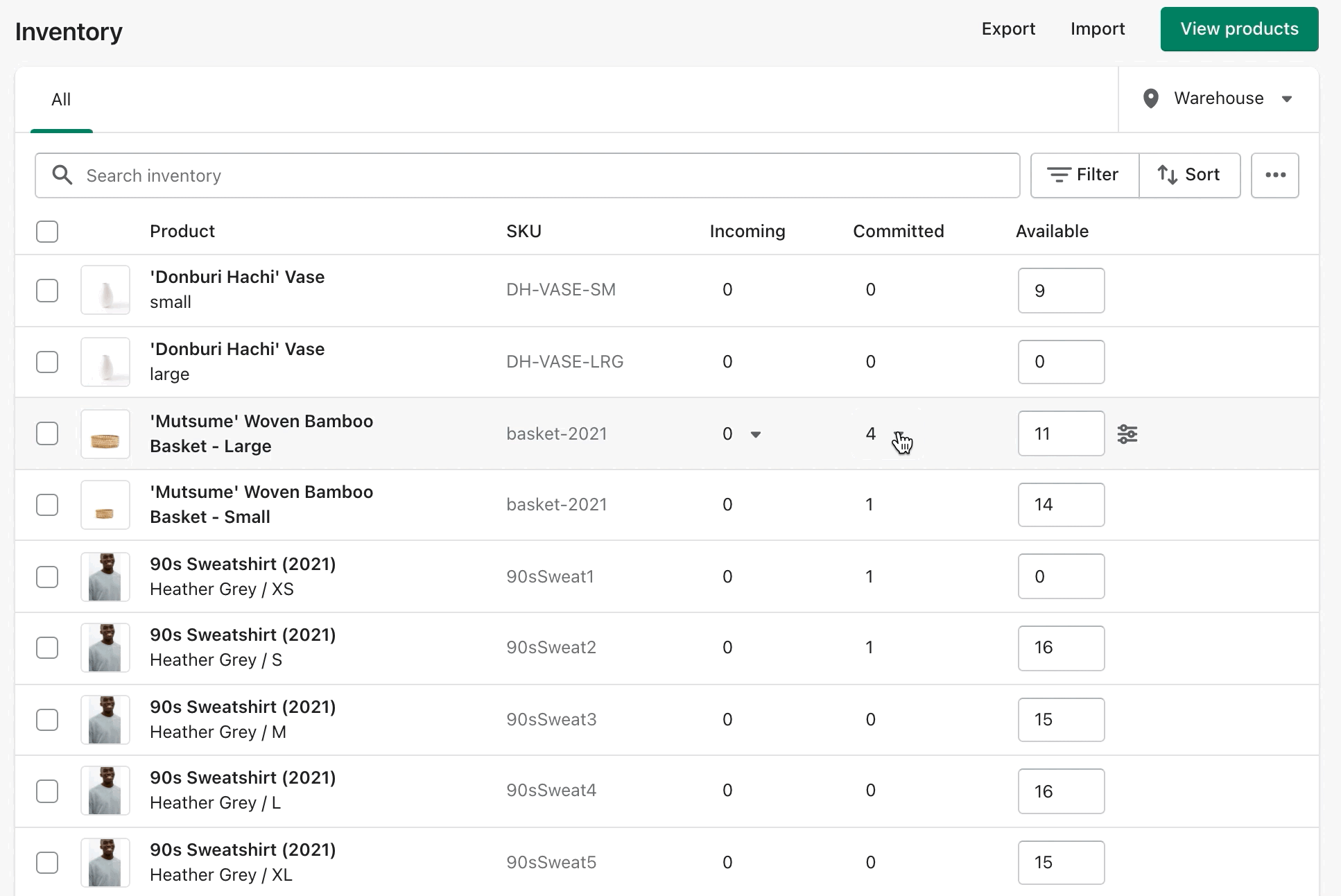Optimize your inventory management with these new features

For multi-channel sellers, the holiday season is the busiest and single most important sales period of the year. In fact, Shopify store owners collectively made a whopping $6.3 billion in sales globally between Black Friday and Cyber Monday in 2021. From an inventory management perspective, it can take countless hours of work preparing and setting up your products for a successful holiday selling season—but what happens after the rush?
Post-selling season is an important time to begin planning, recalibrating, and launching growth plans for the upcoming year. Being proactive with implementing the right inventory management practices at the beginning of the year will pay off in dividends and be crucial in optimizing your inventory for the long term.
Here are five new features to add to your inventory management practice to help you set yourself up for success in 2022 and beyond.
Save time and be more efficient with product organization
It's often said that a minute spent organizing is an hour earned. Organizing inventory can often be a difficult task, and unorganized inventory can often lead to stockouts that cost retailers an estimated $1 trillion per year—a figure that’s on the rise. But having the right inventory levels and avoiding stockouts is critical to being able to make sales. Product organization is the very first step in optimizing your products for searchability to help you find what they’re looking for faster.
Shopify’s product taxonomy feature helps you categorize all available products, so your organization is standardized and your products become more easily discoverable across channels.
This new machine-learning algorithm works behind the scenes to suggest the most relevant category for your products, and you can accept these recommendations in one click across the places you sell.

💡TIP: On the Inventory page in Shopify, you can now sort and filter through your products and save your searches to help you find the inventory you’re looking for faster.

Insights where you need them for easier decision making
It’s no secret that having insights into inventory performance can help you make smarter decisions on stocking the right inventory, in the right quantities, at the right places. This is exactly why we’ve added analytics on the product page, so you can get the insights you need to make decisions faster.
You’ll see the most relevant and impactful inventory metrics to help analyze your inventory performance and make inventory planning decisions—without having to search through individual reports for them.

💡 TIP: You might not see product analytics because it’s only available on the Shopify Advanced plan (or higher) and requires inventory sales data. However, you can easily get started with ABC analysis by product. It showcases historical sales data and grades your inventory on how well it performs and contributes to revenue.
More inventory control with inventory adjustments
Conducting a post-selling season physical inventory count can be a daunting task. It’s repetitive, requires precision, and it takes time to perform accurately. One of the major pain points of an inventory count is reconciling lost, misplaced or damaged inventory, which is an inevitable, common—and frustrating—problem. But what happens when your actual stock is different from what’s in Shopify?
We’ve added inventory adjustment reasons to let you manage and track inventory changes and reconcile discrepancies. You can now provide reasons like “damaged” or “returned” for inventory adjustments, which helps you take control of non-sellable inventory and aids in reporting accuracy and transparency.

💡 TIP: You can view all of the inventory adjustments changes for your products on the inventory history page.
Improve inventory accuracy with committed inventory quantities Get more done, faster with the Bulk editor
Whether products are being picked for orders, moved to different locations, or sold to customers, inventory is always on the move. Having visibility into what is in stock and available for sale, and how many are committed to orders or being transferred to other locations, is critical to keeping your inventory count accurate.
Shopify now provides a view into your true inventory numbers with committed inventory quantities. Committed inventory describes inventory sold and paid for (“committed” to an order), but not yet fulfilled. This new inventory quantity provides a more accurate reflection of your inventory count by adding visibility into inventory that has been sold and is on hand but has been committed to an order. This way you can fulfill orders and manage stock count without under- or overselling.

💡 TIP: You can scroll over your committed inventory and get a glance of which orders your inventory is committed to to help with tracking and preparing orders for fulfillment.
Get more done, faster with the Bulk editor
Managing inventory and products can often be a tedious task - especially when it comes to making common changes to things like product SKUs, prices and sales that happen frequently. With the new Bulk editor you can manage more of your products at once to save you time and improve your efficiency.
Updating product information across your products, collections and inventory has never been easier with the improved Bulk editor. You can make changes to your products through standard cell interactions and perform many different types of tasks - like adjusting prices, changing SKUs or barcodes and editing tags across multiple products all at once. 
Inventory management is difficult to get right and you’ve spent valuable time prepping for the holiday selling season. So keep the momentum going and use this guide as a launchpad to improve and optimize your inventory practices for the year ahead. These five new features will help you become more efficient and accurate, and give better control over your inventory to step up your strategies for 2022 and beyond.